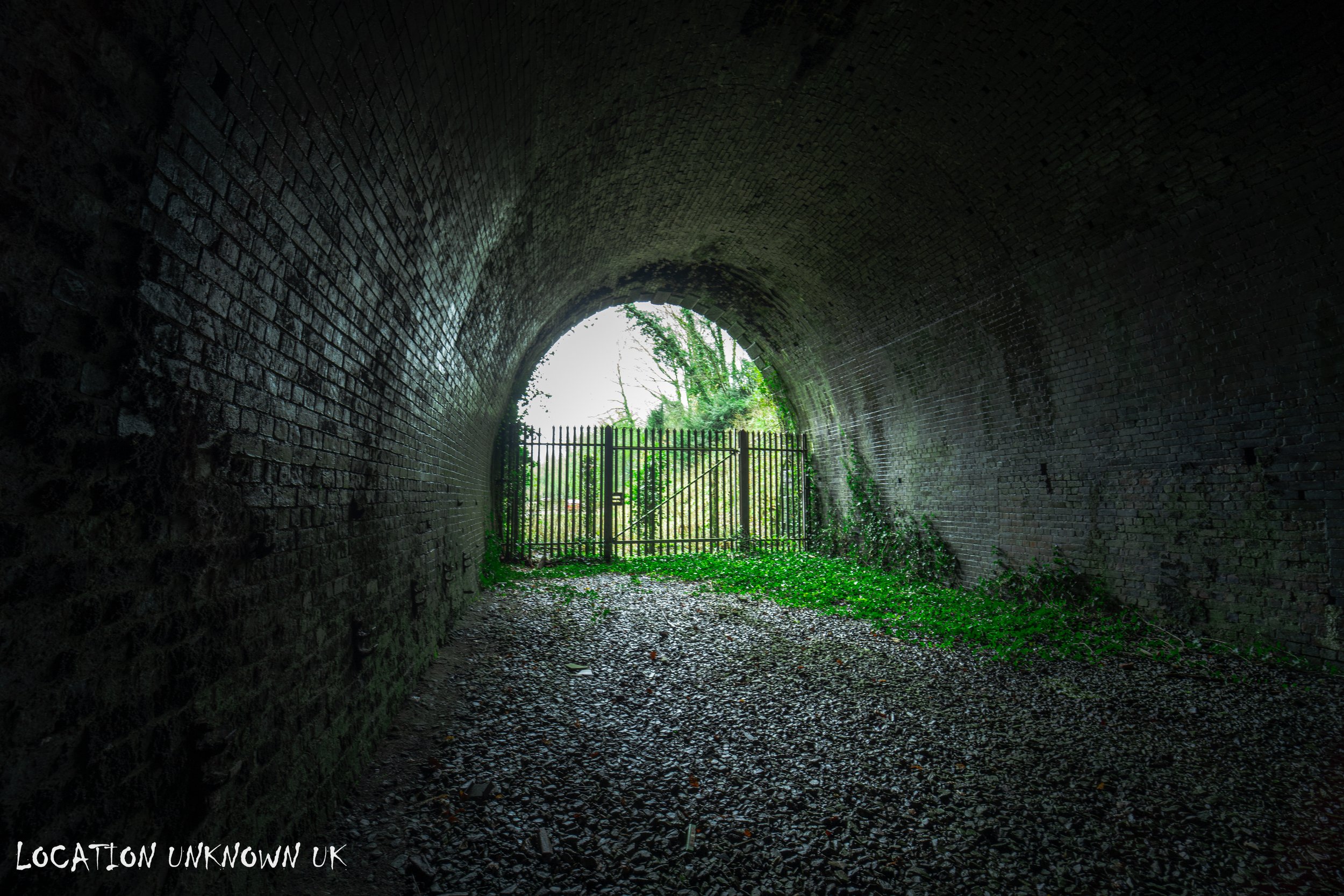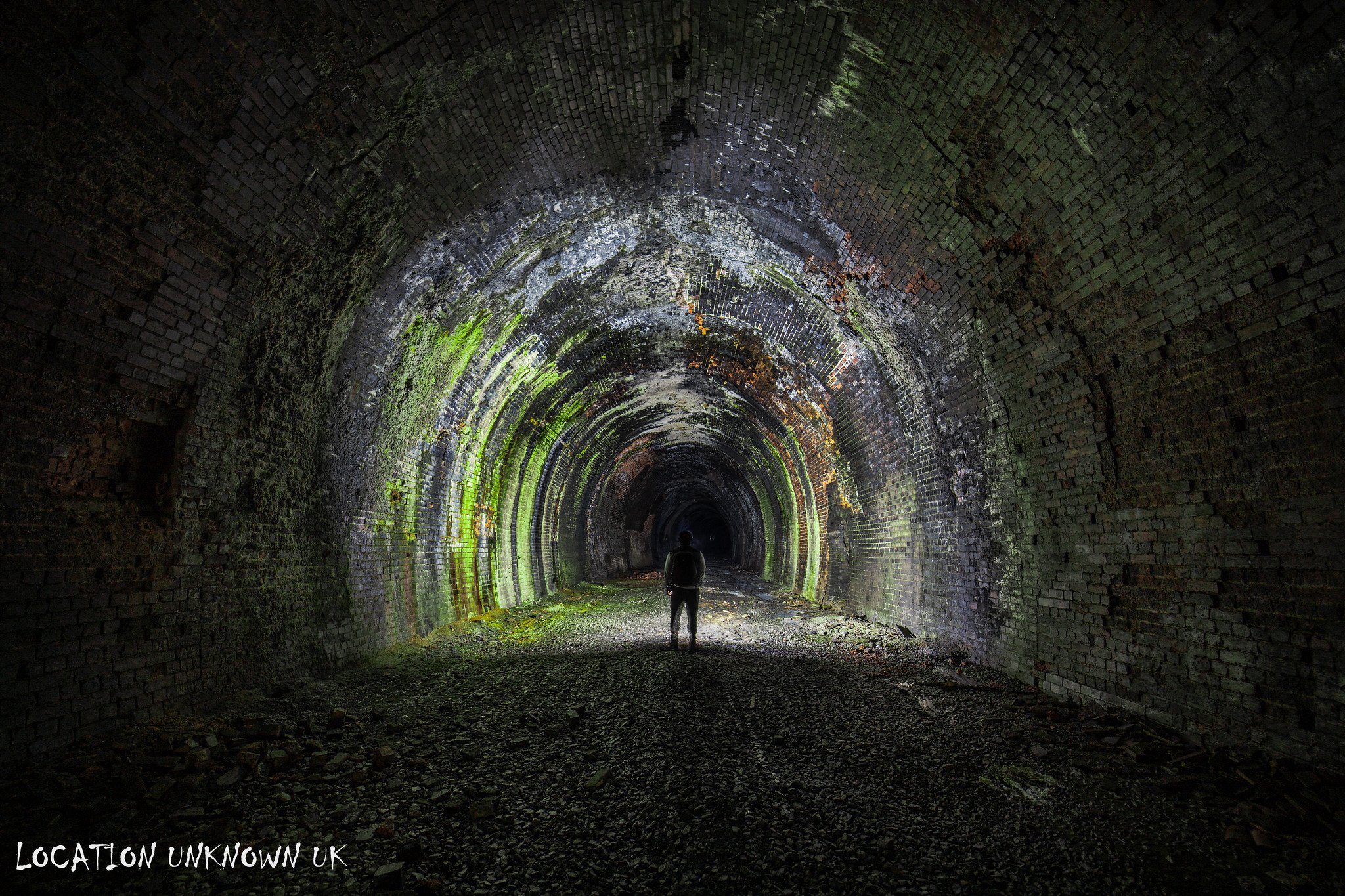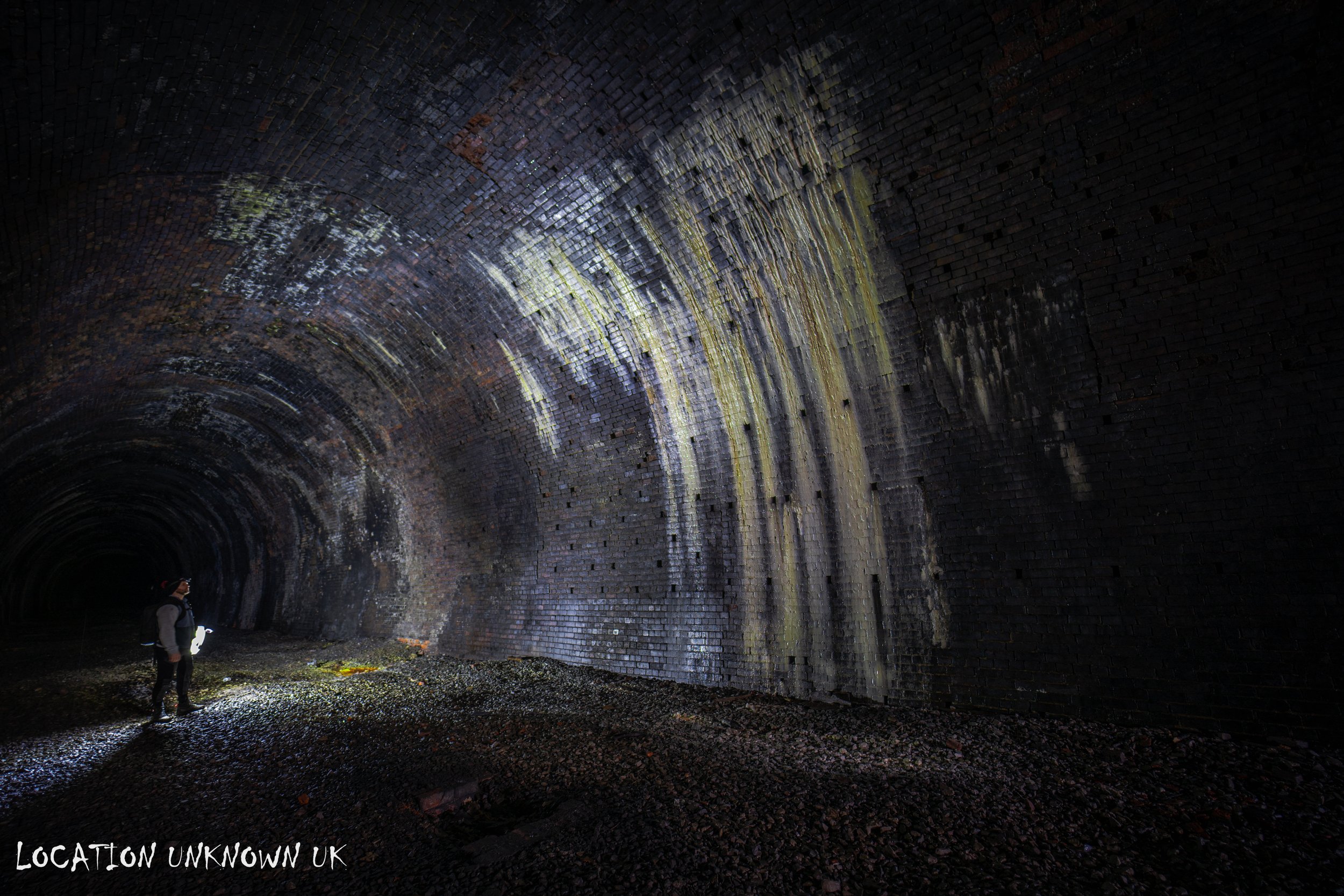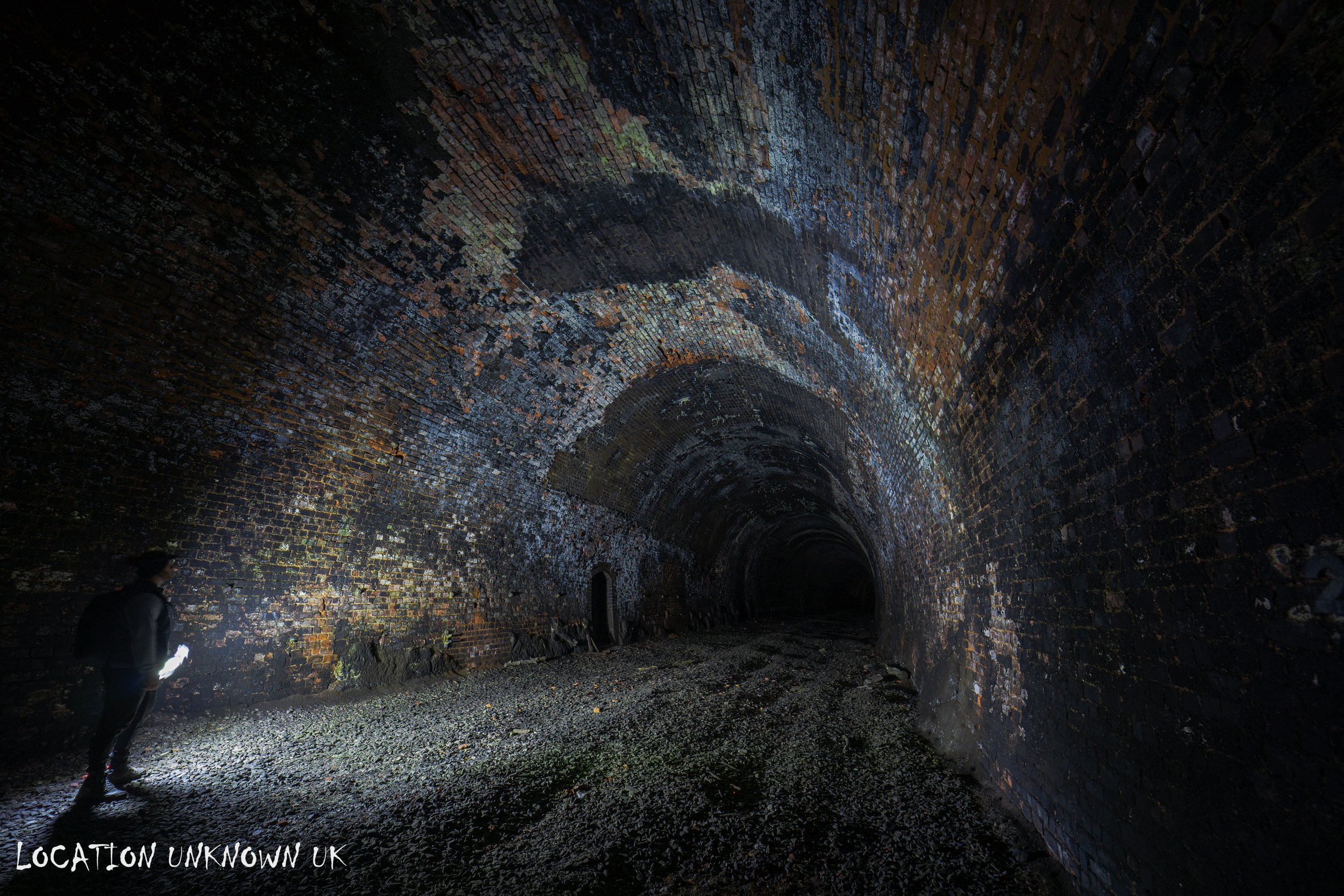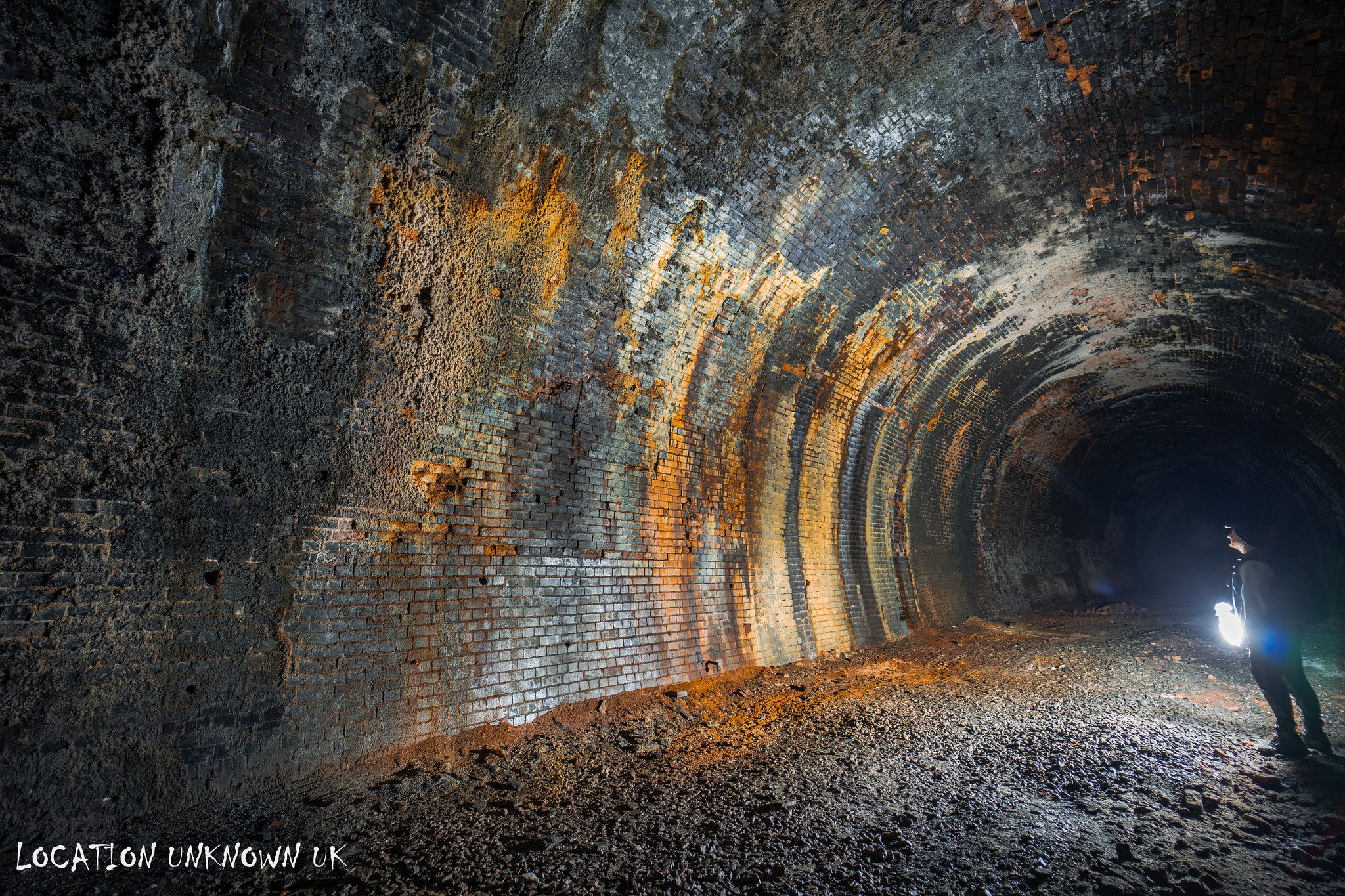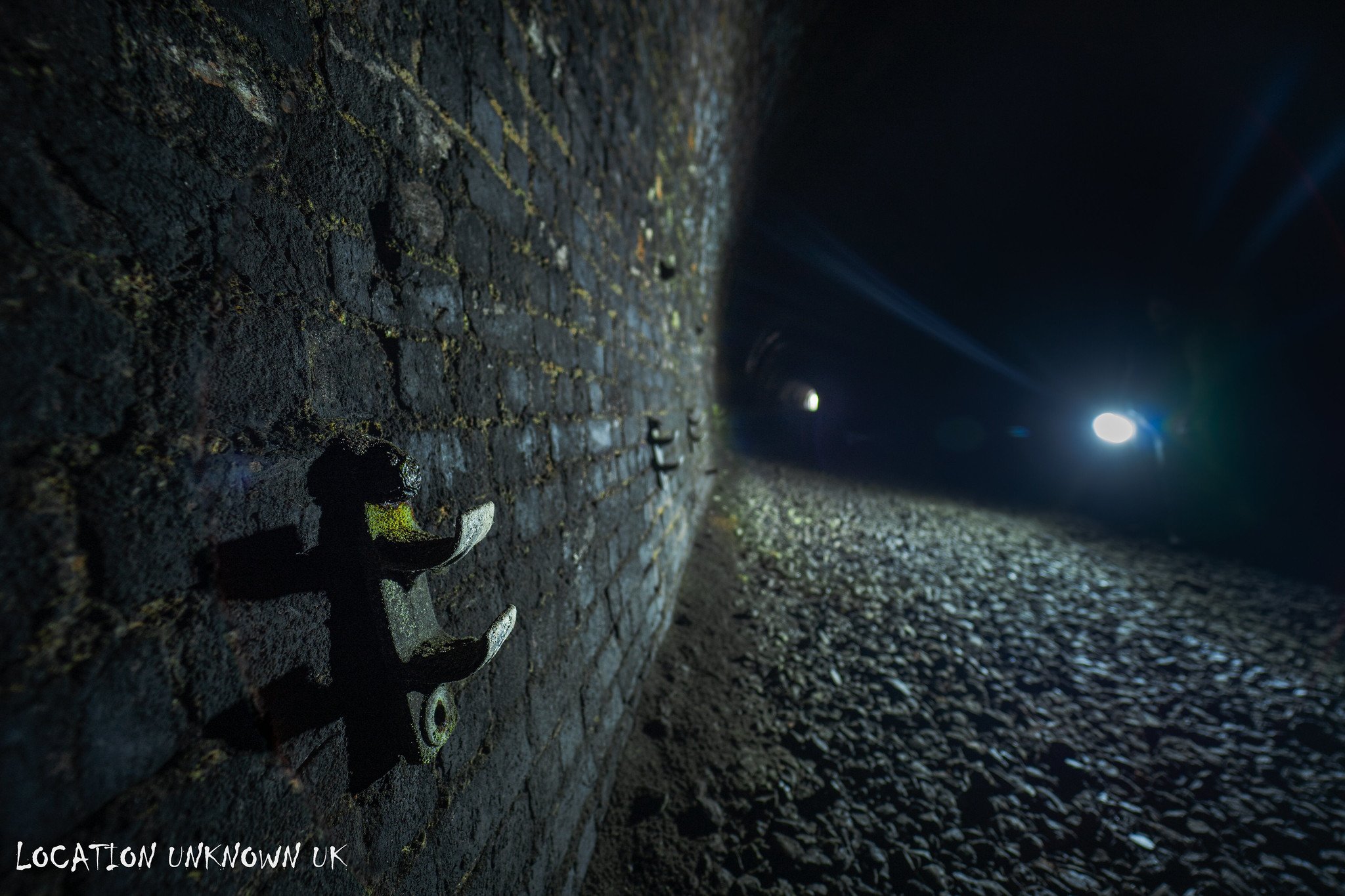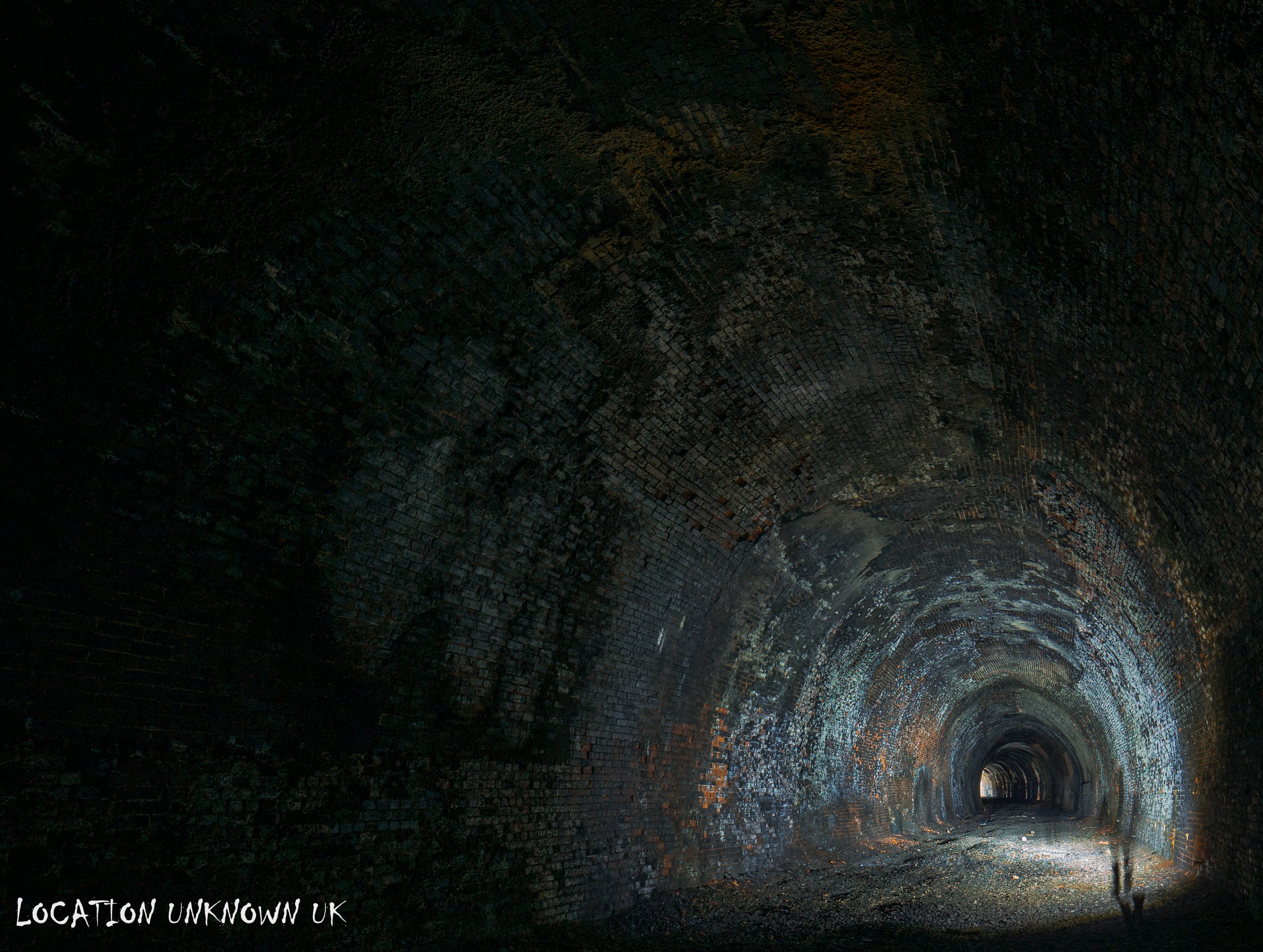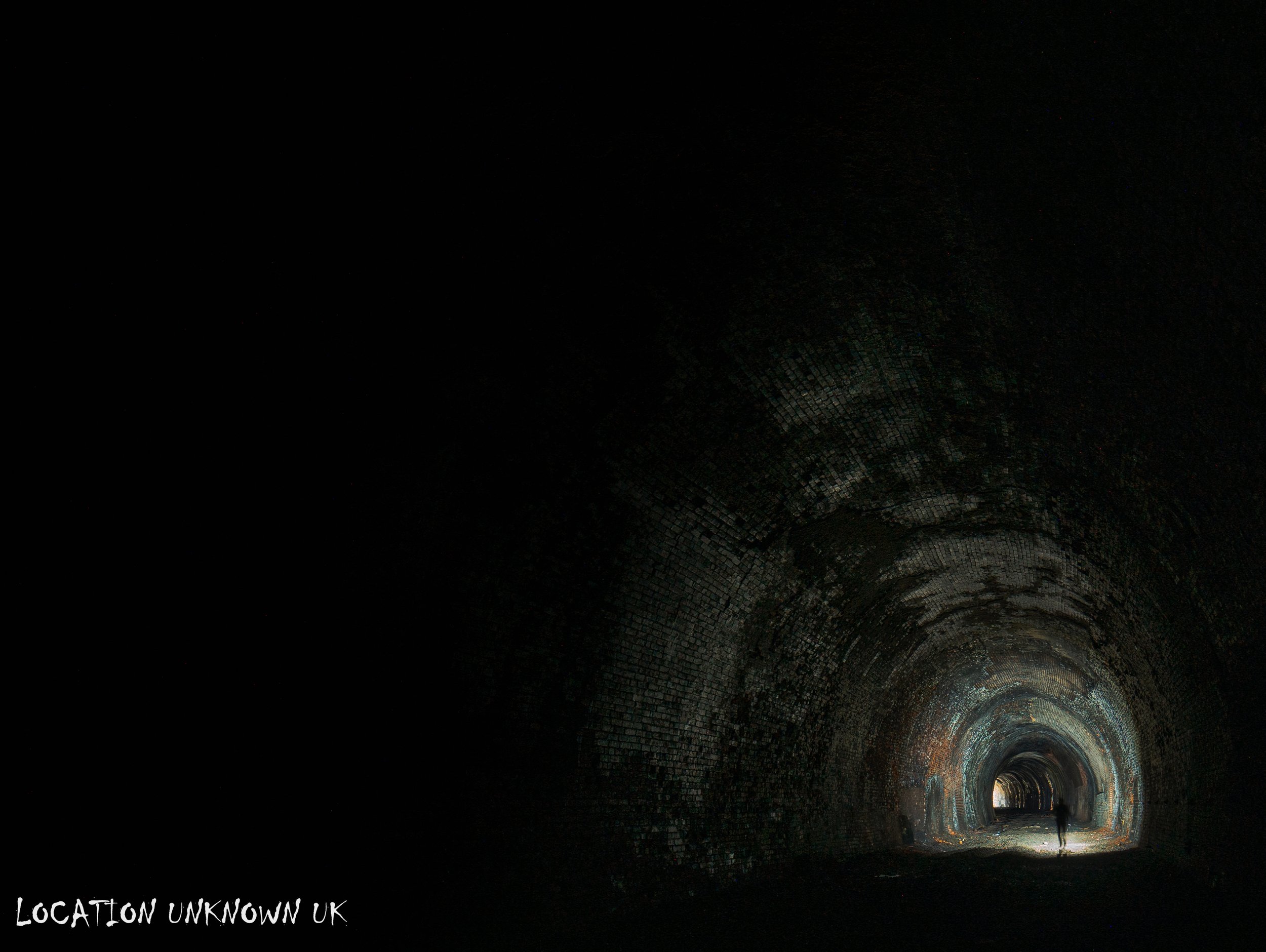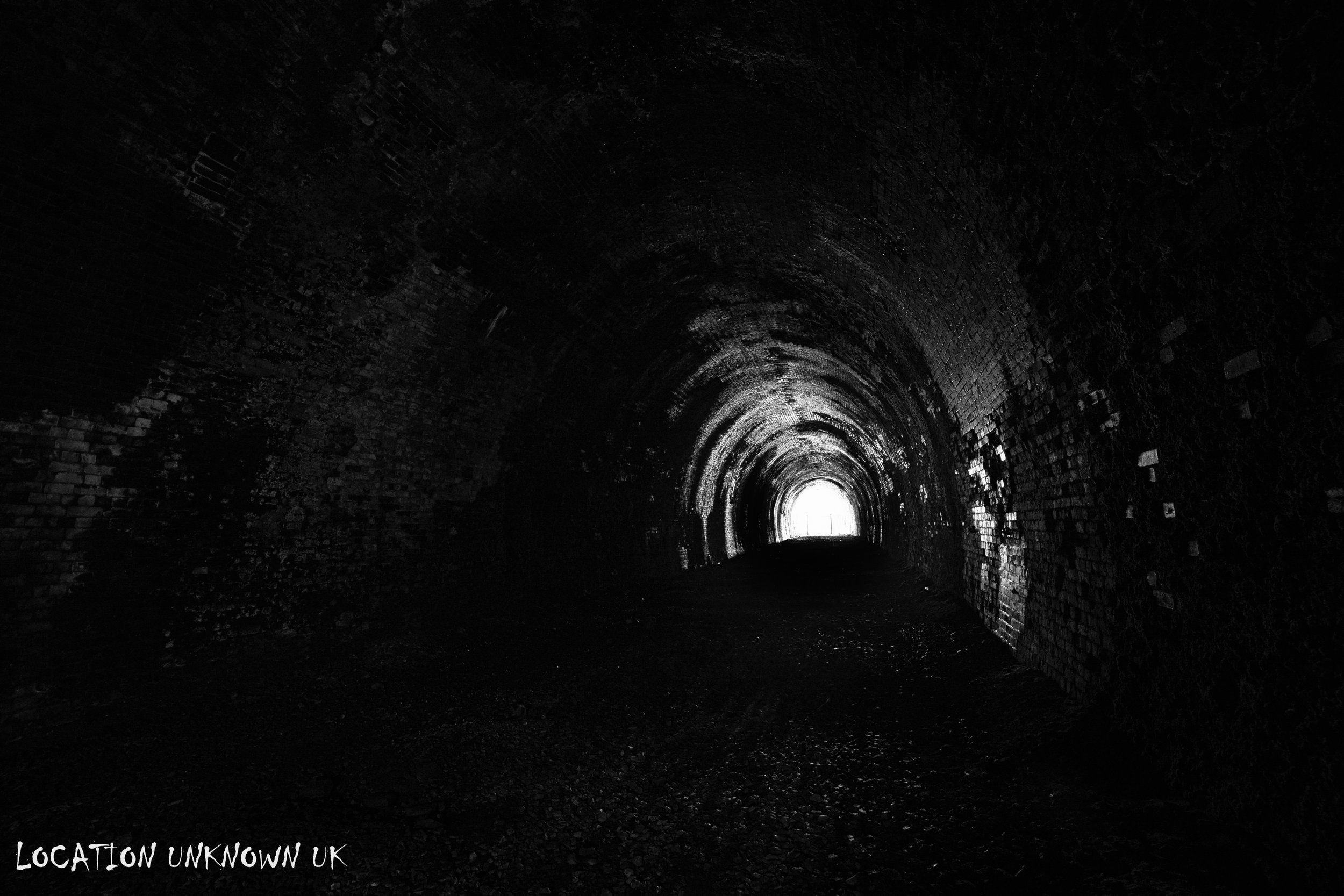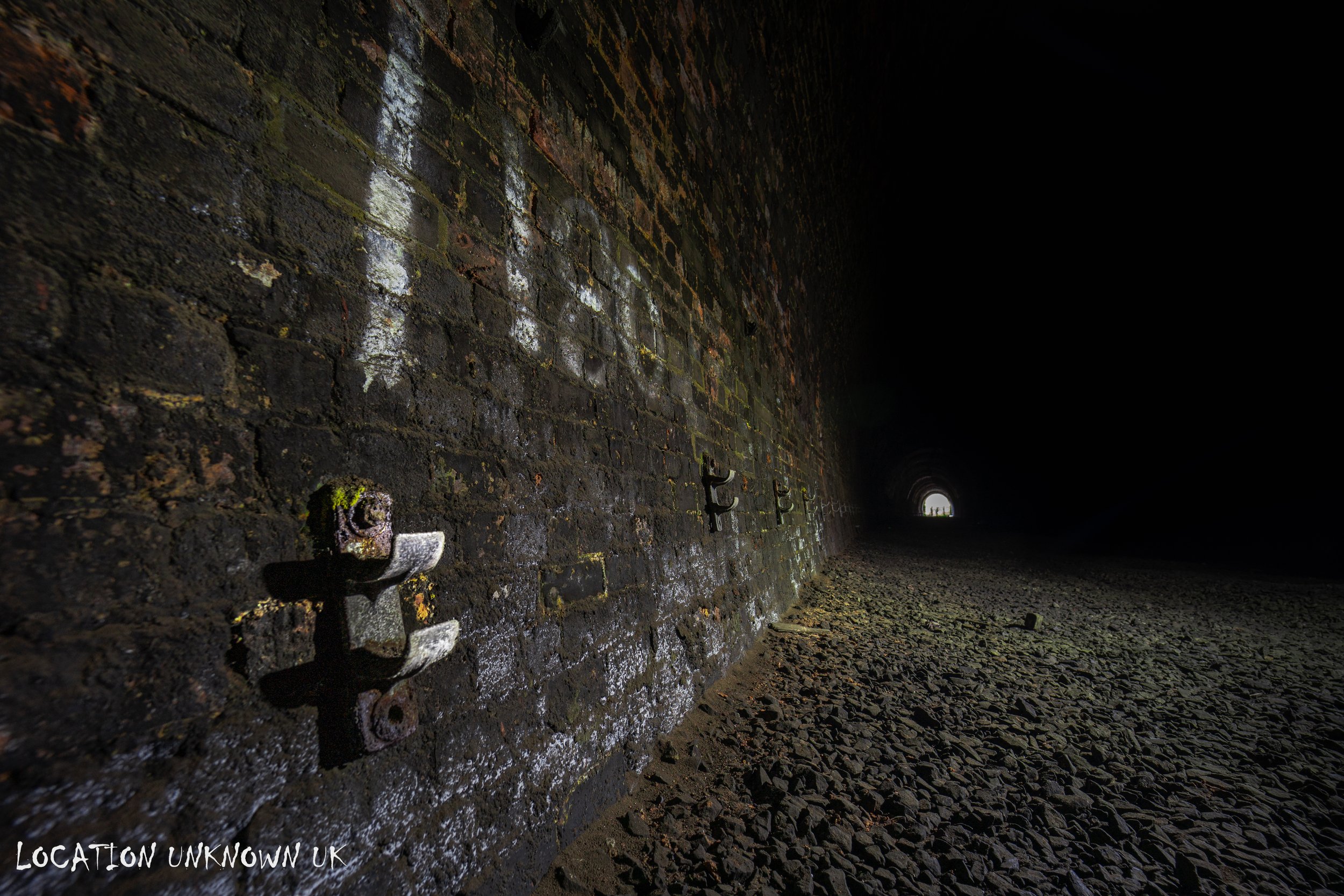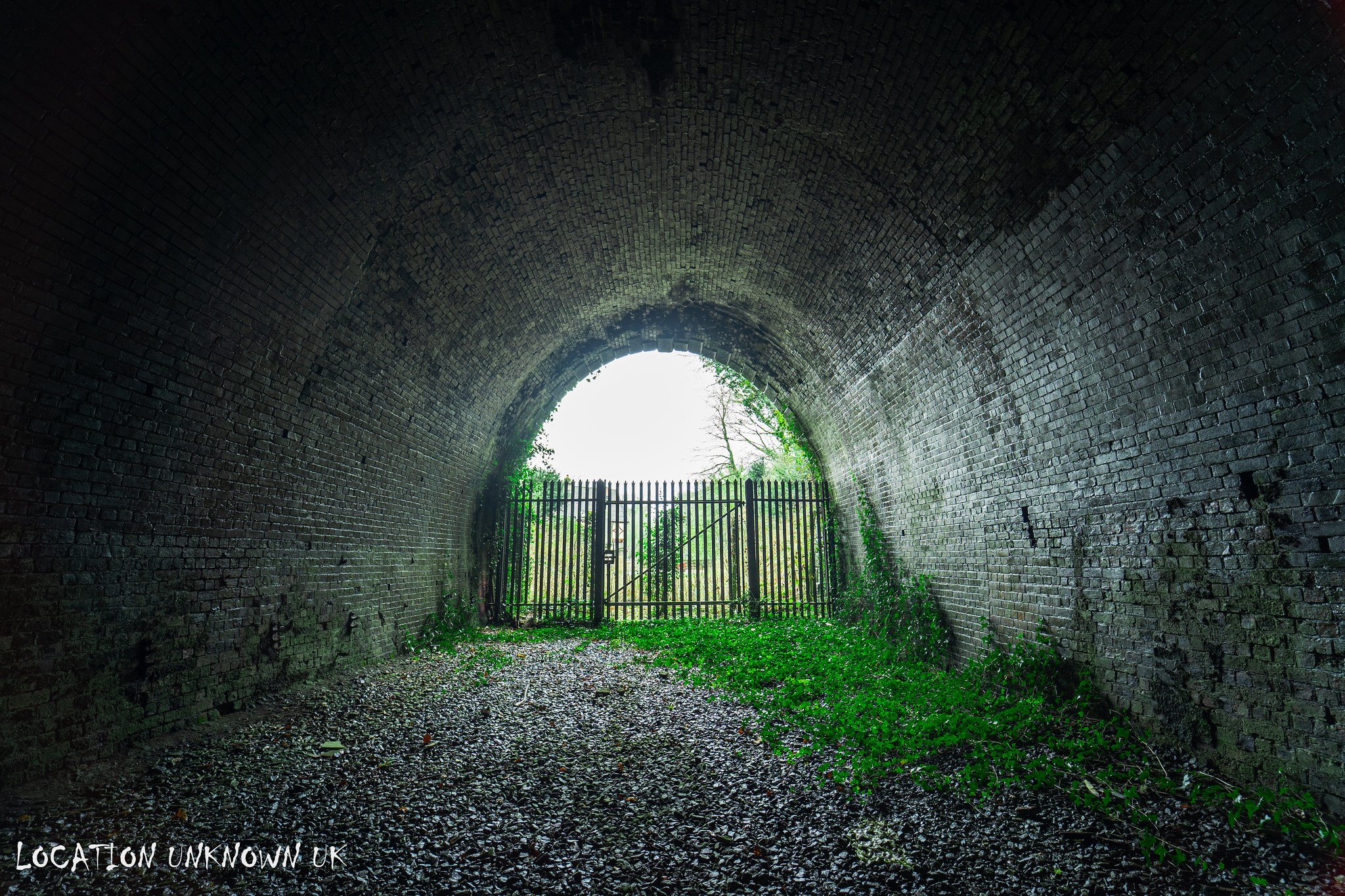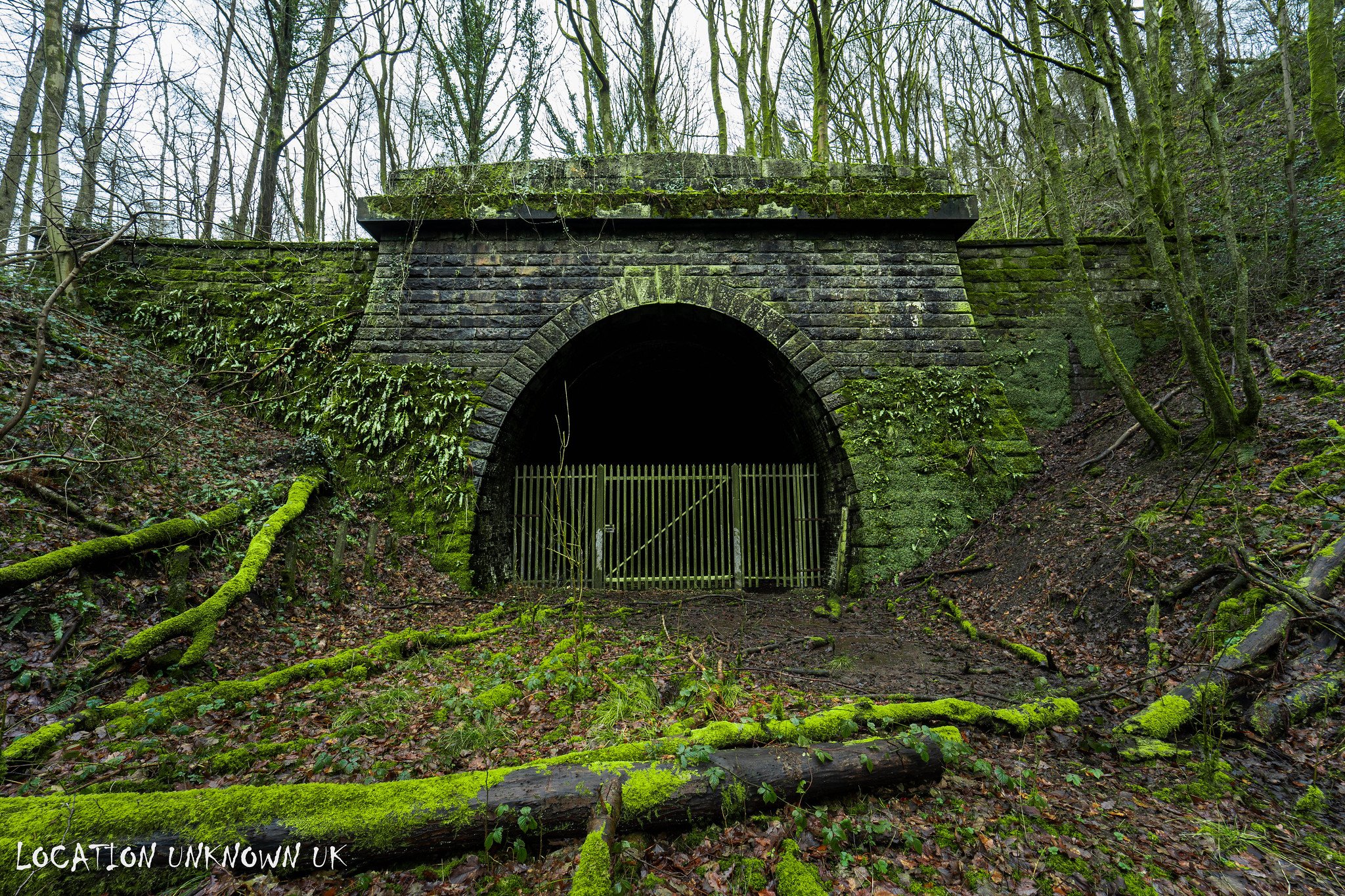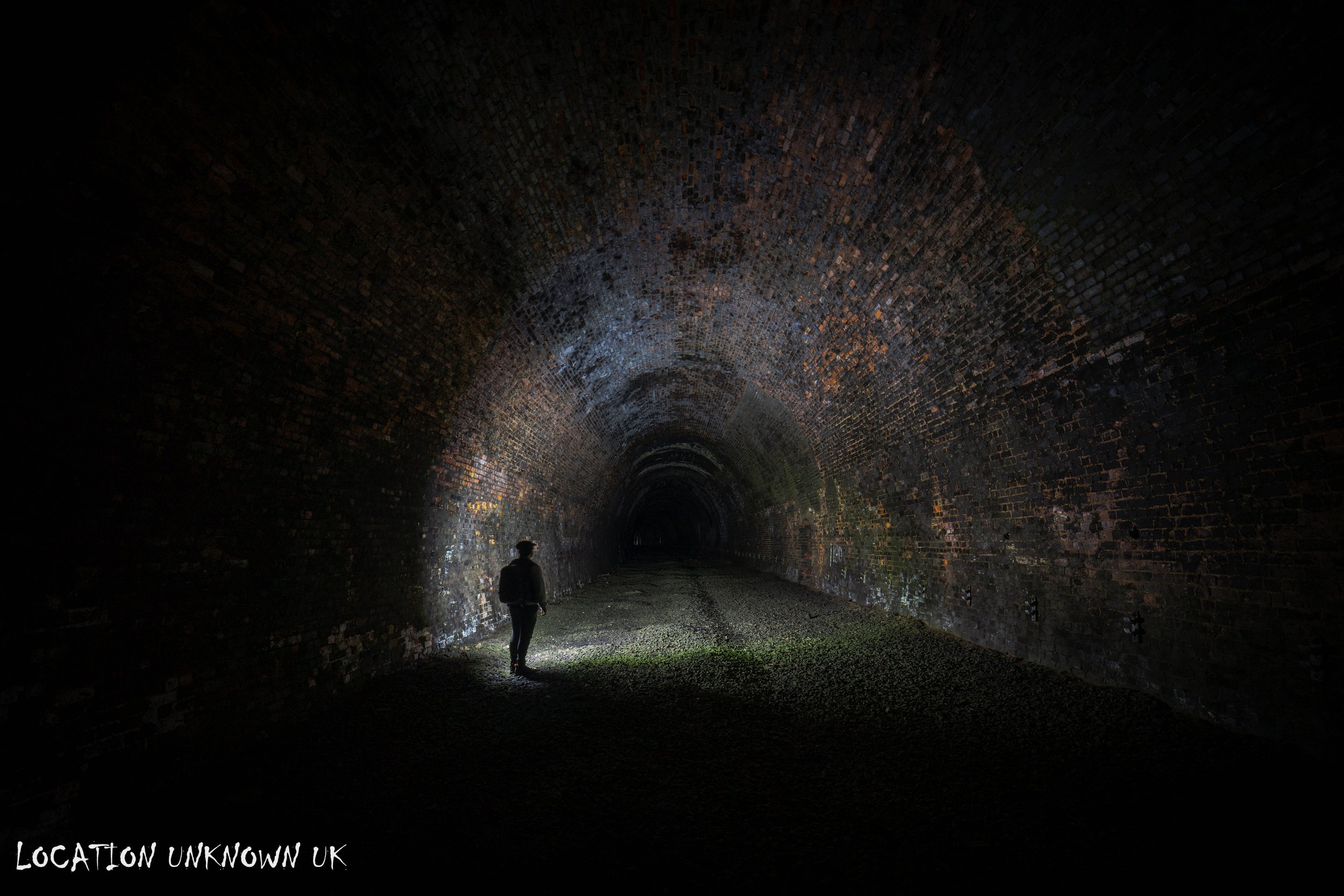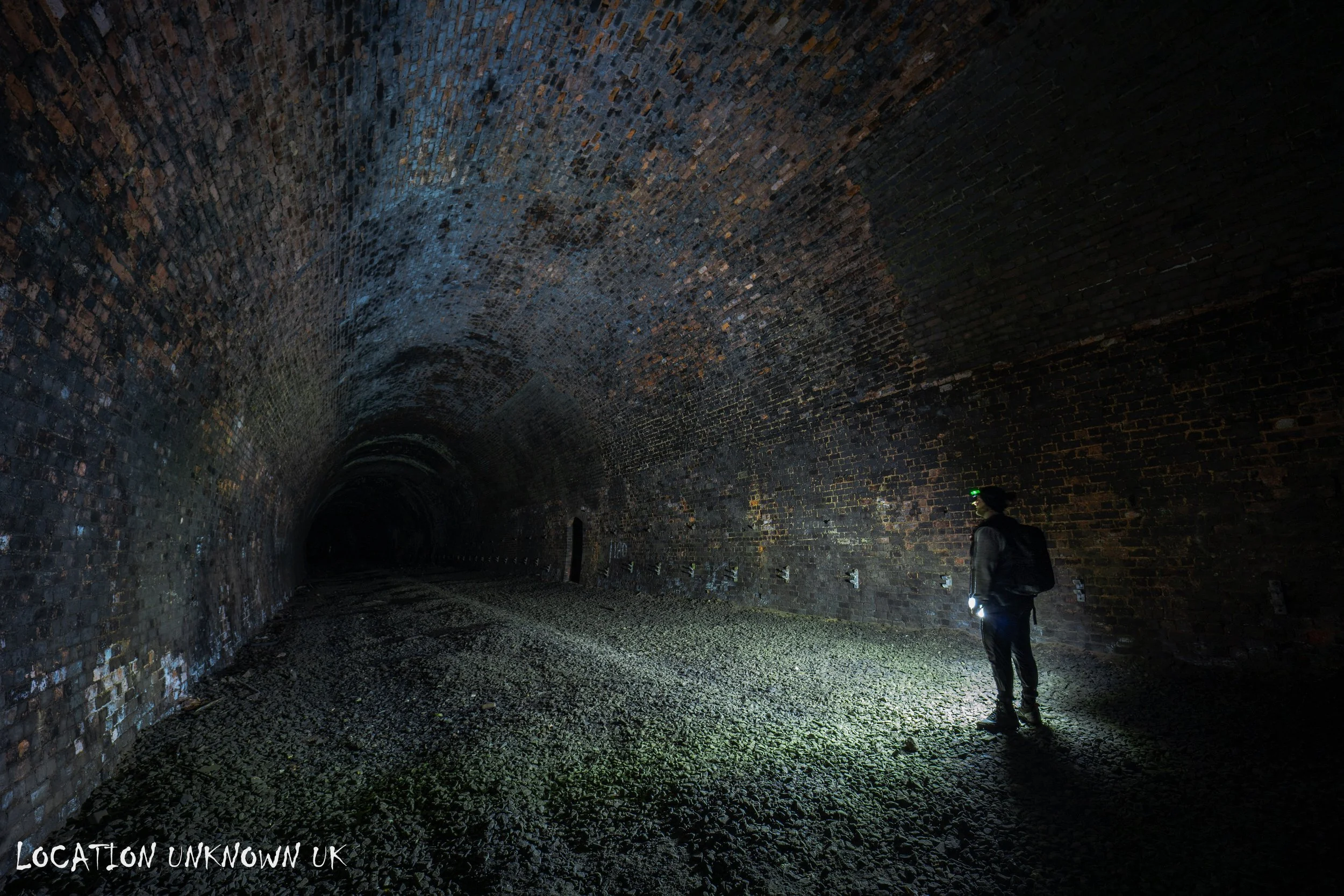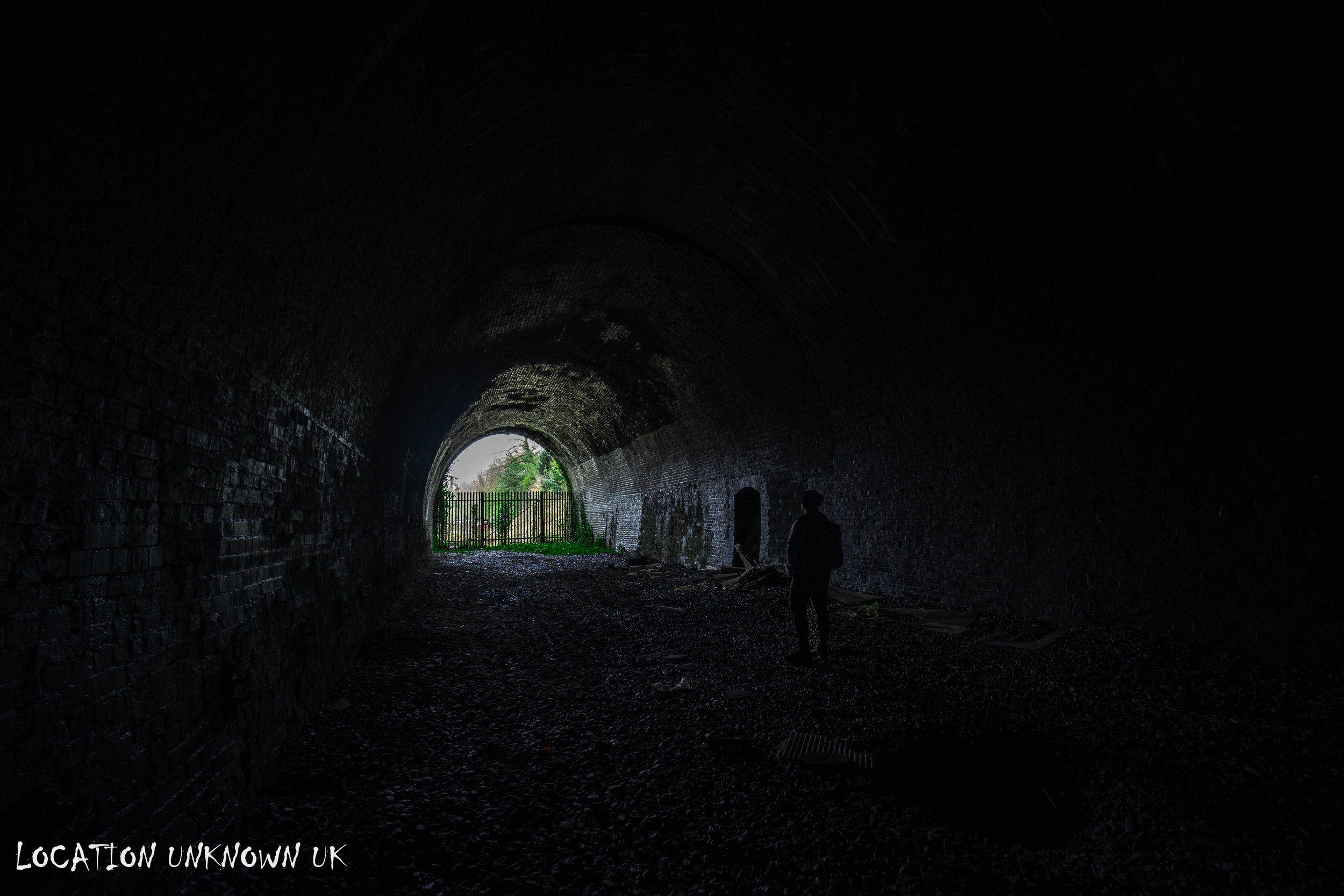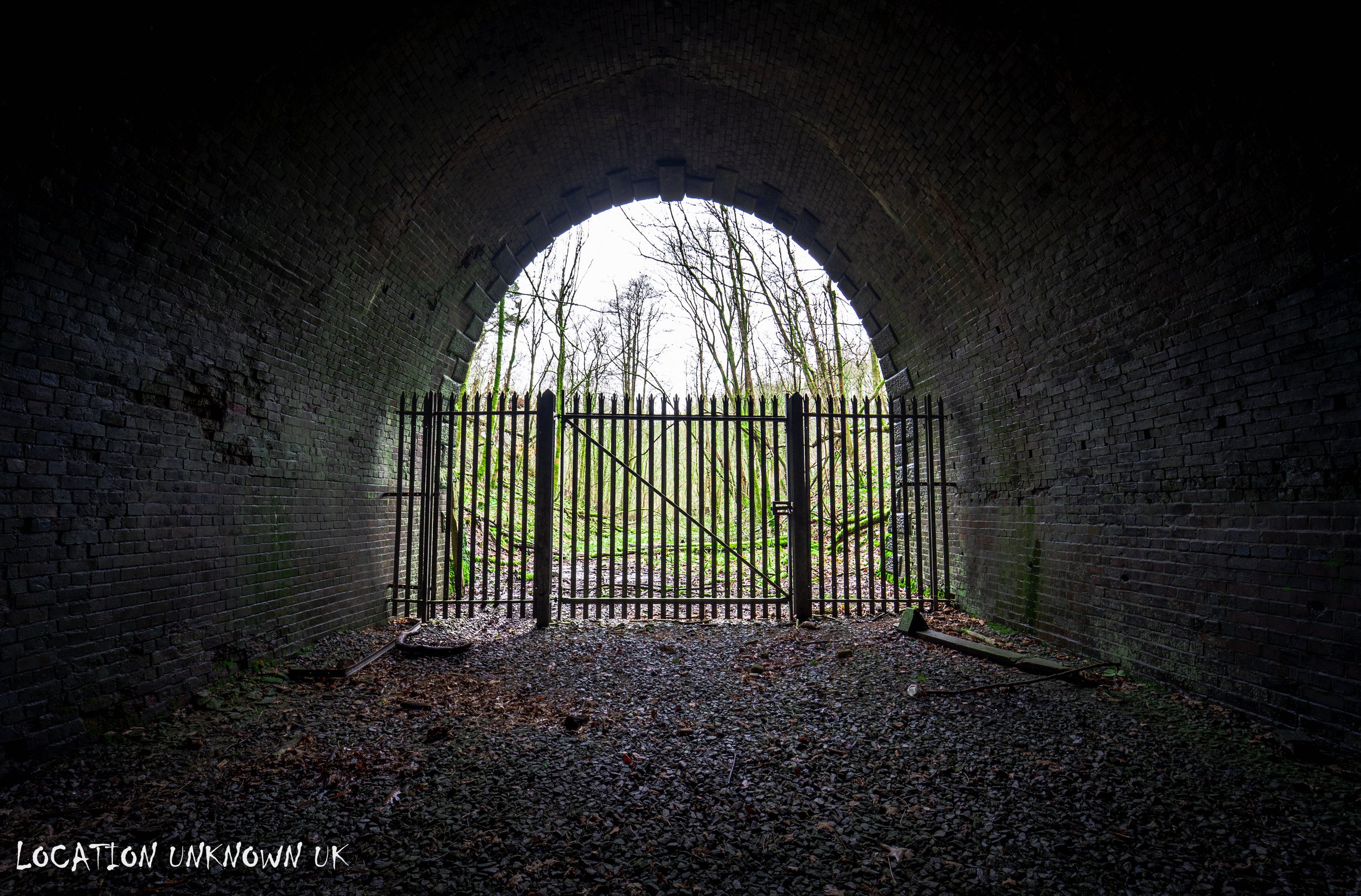Oakamoor Tunnel - Staffordshire
On a quiet morning, I arrived near Oakamoor Railway Tunnel, drawing a few curious glances from the locals. The northern portal was deep within a forest and lacked parking, so I opted to approach the tunnel from its southern entrance.
The former crossing keeper's house, now renovated into an up to date place of residence, stood just a stone's throw from the southern porta. To reach the entrance without drawing attention, I used the cover of the surrounding forest. Carefully slipping through a loose section of palisade fencing, I tried to make as little noise as possible. Just as I was halfway through, the back door of the house creaked open, and out dashed a small dog.
I froze. Hidden behind some sparse vegetation, I watched the dog sniff around the garden, inching closer to the tunnel. It was only a few meters away and would no doubt spot me at any moment. Not knowing how the dog might react—or how its owners might— I quickly slid the rest of my body through the fence and sprinted a few meters into the tunnel, ducking into one of the refuges. The dog began barking, clearly aware of my presence. While it was a small creature, my real concern was its ability to alert its owners to an intruder.
Luckily, the owners didn’t seem keen to investigate. I could hear them calling the dog back from inside the house, but they stayed put. Later, I discovered that the crossing keeper’s house is now a popular Airbnb rental.
Once inside, I realized the homeowners were using the tunnel for storage, with building supplies scattered near the entrance. This added a bit of tension, as the risk of them entering the tunnel was still there.
Although short, the tunnel itself was quite charming. Its ambient atmosphere might have been due to my solitude, but it had an undeniable allure. Designated as a bat habitat, I didn’t spot any bats during my visit. The tunnel's distinct horseshoe shape allows light to filter in from both ends, except for a brief stretch in the middle where darkness takes over. Around the halfway point, I noticed numerous holes drilled into the brickwork, seemingly to manage rainwater flow more effectively.
After reaching the northern portal, I decided it would be easiest to return the same way—despite the risk of another encounter with the vigilant pooch. Timing my exit carefully, I slipped back out and onto the road. As I glanced up, I spotted a disgruntled woman glaring at me from the top floor of the house. Whether she had seen me enter or leave, I didn’t stick around to find out. I quickly got into my car and drove away.
Staffordshire is home to many forgotten gems like the Oakamoor Tunnel. While some tunnels are permanently sealed, others remain wide open—or frustratingly locked just before I arrive, as was the case with Silverdale Tunnel. The council seems determined to keep that one closed, likely due to nearby housing developments.
Another railway tunnel explored and ticked off the list!
History
“The Oakamoor Tunnel, located in the Churnet Valley of Staffordshire, is a historic railway structure built as part of the North Staffordshire Railway (NSR) during the mid-19th century. The tunnel, measuring 497 yards (454 meters) in length, was an essential component of the Leek to Uttoxeter branch line, which opened in July 1849. This line also connected to Alton, a location now famous as the site of Alton Towers. Constructed from blue brick with stone portals, the tunnel features a horseshoe-shaped profile and a unique alignment curving to the west. Its design also includes occasional rock outcrops near the track bed, a testament to the challenges of its construction. As part of the Churnet Valley route, £1.2 million was allocated for its construction—a significant investment reflecting its importance within the expanding railway network.The tunnel remained in operation until the 1960s, when the Beeching cuts led to the closure of many branch lines. Over the decades, neglect has caused noticeable deterioration, including damage to the brickwork and partial collapse of the external lining, particularly at the northern end, where moisture and freezing conditions have compounded structural issues”.

